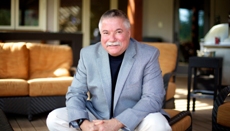The following is a guest blog post by Ivo Nelson, Chairman of the Board of Next Wave Connect.

As U.S. hospitals, professionals, and patients from coast to coast grapple with a daunting maize of healthcare challenges that’s growing more complex each day, it’s easy to forget that the solutions we need might just be sitting in someone else’s back yard. And no matter who might own those great ideas, harvesting their value depends upon finding the best ways to share and make the most of them.
Both of these themes were at the heart of an exceptional two-day event I attended in Copenhagen recently, hosted by Healthcare DENMARK. Called “The Ambassadors’ Summit,” each participant was invited to attend based upon his or her lifetime healthcare-industry contributions. The Summit provided our group the opportunity to compare ideas and benchmark best practices with peers from around the world. And while every national representative had something valuable to offer, some of the best thinking came directly from our hosts themselves.
Denmark has long stood out among nations for its health system, which is differentiated by its fundamental focus on the patient. The Danish system functions by placing the patient in the center of its care-delivery circle. Patients’ involvement in their own care is essential for the system to work. And while few argue that patients should have a greater say in their own care, in Denmark they really do.
Because the Danes have made healthcare a true national – not political — priority, there’s a team mentality country-wide to support it – to improve it continuously over time. It was this commitment that led Healthcare DENMARK to hold the Summit in the first place: they recognized that every country around the world has its own best practices to offer for consideration. For example, Summit Ambassadors from Germany brought participants their expertise in international healthcare systems, managed care, integrated care, secure data transfer, and theoretic medicine, among others. Colleagues from the United Kingdom shared insights from their roles in organizations like the World Health Care Congress and in subject areas such as healthcare analytics and health system financing, to name a few.
At the end of the Summit, we all agreed to return a year from now having advanced our own care systems by harnessing and developing the rich ideas we’d shared in just 48 hours. Easily said, but what will prove the best means of connecting all the ideas in all those back yards? The answer is social media used smartly – in a way that establishes closely defined social networks that engage communities interested in solving very specific problems.
As I left the Summit, I could already envision a new group of social communities that could invite the participation of the leaders who contributed so much to the Ambassadors Summit – effectively creating real-time conversations around the key issues that concerned each one of us. For example, we could launch a new community with a “Danish voice” to advance our nation’s work to increase patient centricity. Another smart social network could consider the construction of new hospitals and the consolidation of existing ones. Other smart social healthcare communities could focus on medical homes, the roles of primary-care physicians, and the true connectivity of personal health records.
The possibilities are energizing because they are so clearly within our reach. With the smart use of social platforms, global boundaries lose relevance, great meetings like the Ambassadors Summit never have to adjourn, and our power to drive a world of better care increases exponentially.













